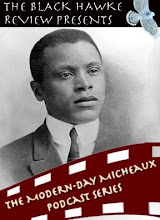 Before the huge 2009 "Precious" buzz, this was the movie of the year I couldn't wait to see. Robert Downey Jr, Jamie Foxx and director Joe Wright, about a musician whom plays classical music, how can you go wrong???? We soon will see.
Before the huge 2009 "Precious" buzz, this was the movie of the year I couldn't wait to see. Robert Downey Jr, Jamie Foxx and director Joe Wright, about a musician whom plays classical music, how can you go wrong???? We soon will see. The Soloist is based on the true story of a Los Angeles Times columnist (Steve Lopez/Robert Downey Jr.) whom befriends a schizophrenic, homeless musician (Nathaniel Ayers/Jamie Foxx). It's basically a bromance drama except one buddy needs serious help but doesn't want it and the other buddy doesn't know when to quit pushing. The film was directed by Joe Wright (Pride & Prejudice & Atonement).
Let me start by saying I am not bashing this film. It is a good film, it just doesn't hit home as I would have wanted it to.
Both Jamie Foxx and Robert Downey Jr. both hold up their end showcasing superb acting, which isn't a surprise since they've both played variations of these roles before - (Downey in Zodiac, Foxx in Ray). But what got my attention is director Joe Wright whose rising up my favorite to watch list. Wright transforms even the most mundane shots to visual gemstones. There's the typical Downey on the phone scene, yet Joe makes it breathtaking by putting him on a ledge overlooking the Los Angeles freeway. There's also an awesome scene where a young child Ayers sees a burning car out of the window in his basement. Wright moves the camera around Ayers (who's still playing the Cello) highlighting him and the raging fireplace behind him. This is showing his progression into schizophrenia and again was all in the placement of the camera. Sorry I couldn't find a youtube clip of it, but if you see the film you'll see what I'm talking about. He even makes South Central Los Angeles look beautiful in a macabre sort of way. There's even a scene showing the vibrant colors of music that reminded me of this scene in Ratatouille.
The problem I had with The Soloist, even though minor, is the script and I truly believed it could have turned this average film into an Oscar short list contender. Everything works out well except for the emotion. As an audience member, you never really understand why Lopez is so desperate to help Ayers. They allude to it being his failure as a parent but it still is never clear. And you feel sorry for Ayers as a schizo but you never feel that sorry for him. He lives on the street but you never get a sense that he's in any danger. He actually seems to enjoy it and feel a bit at home. I hate to say it, but maybe more dramatiziation would have been the key. If I would have understood the characters better and saw them in a little more peril then I could have gotten emotionally invested. But unfortunately, I did not. However, screenwriter Susannah Grant also wrote Erin Brockovich so I'll let her off the hook this once.
CULTURAL INTROSPECTION:
The topic of those mentally challenged came up the other day when I was visiting a friend's book signing. A lady discussed movies she's seen depicting those with mental illnesses and said The Soloist was the first one that gave the person any type of personality. I'm not an expert on the subject but it is worth thinking deeper about. Sometimes it's hard not to think of them as lost causes (which is what society often does) but these are real people too, with families, and personalities, and dreams, and hopes, and feelings. Nathaniel Ayers was a musical genuis with a slightly mental off-balance.
In the movie, Steve Lopez does the exact opposite. He cares too much in that he thinks he can fix Ayers. Don't get me wrong, he does a lot for him. But when Ayers discovers Lopez sees him more as a charity case, he goes ballistic. He didn't need a savior and in truth the obstacle was over Lopez's head, but just by being Ayers friend he did so much good for him. Again, it's hard to think of them in terms of real people with the same emotions and embarrassments that all of us share. But sometimes they don't need a savior. They need a friend that won't treat them like the lowest form of human.
THE BLACK PERSPECTIVE:
A big character in this film is South Central L.A. and it features a group of people often not depicted in Hollywood - those in poverty. As I said before, Wright depicts this often forgotten side of life in a beatiful yet macabre way, yet I couldn't help but noticing most of these people were black.
South Central L.A. could very well be mostly black, but it more than likely isn't. One problem Hollywood and the media for that matter (often news) has is the overrepresentation of minorities in poverty. Because whites overpopulate blacks (and for now Hispanics) in this country they also overpopulate them in poverty. I pulled up a 2007 Census Government report that shows that there are roughly 243,000 whites under the poverty line, but only 39,000 blacks and and 46,000 Hispanics. However, after watching TV one would think differently. This is not only true for poverty but also for crime.
"Whereas Blacks actually acconted for the lowest percentage of arrests in the real crime statistics, they made up the highest percentage of petratros represented on TV news. Whereas their actual arrest rate was 21%, a full 37% of TV news perpetrators were Black. In contrast, compared to the actual arrest rate for Whites (28%), only 21% of the perpetrators shown on TV news were White. "
(Sparks, Glenn G. Media Effects Research A Basic Overview (with InfoTrac®) (Wadsworth Series in Mass Communication and Journalism). 2nd ed. Belmont: Wadsworth, 2005.)
The media is notorious for sending sublimimal messages, mostly in issues revolving around race, sex, violence, and concepts of beauty. The only way to really combat these messages and misconceptions the media portrays is to be aware of them and understand that everything you see is not how it always is.
RATING:
 = 2 Stars
= 2 Stars = 2 Black Fists
= 2 Black Fists














.jpg)
No comments:
Post a Comment